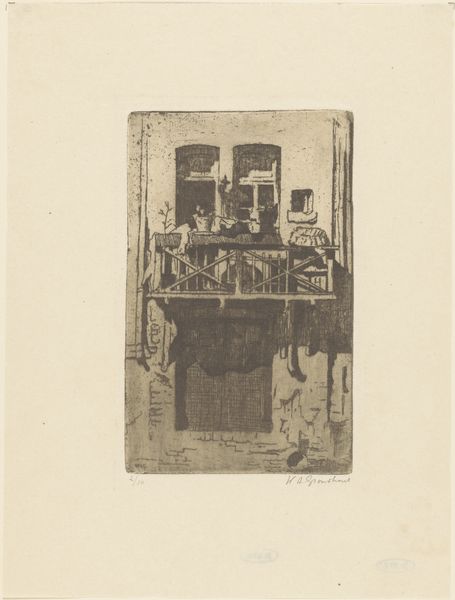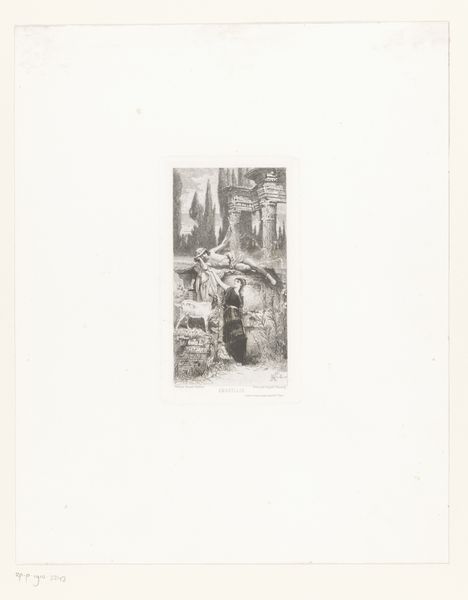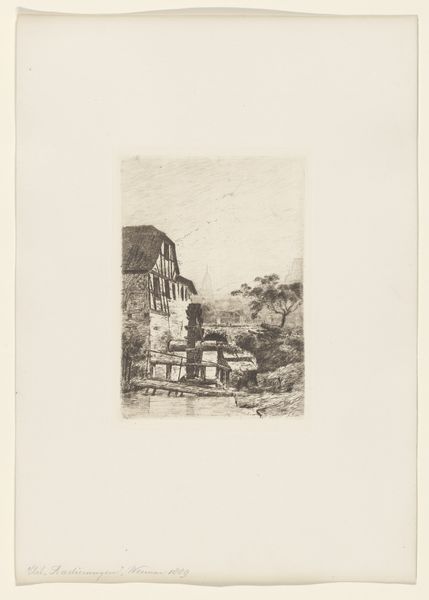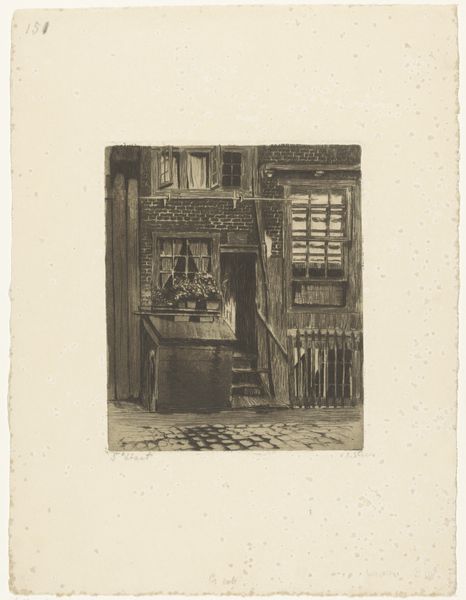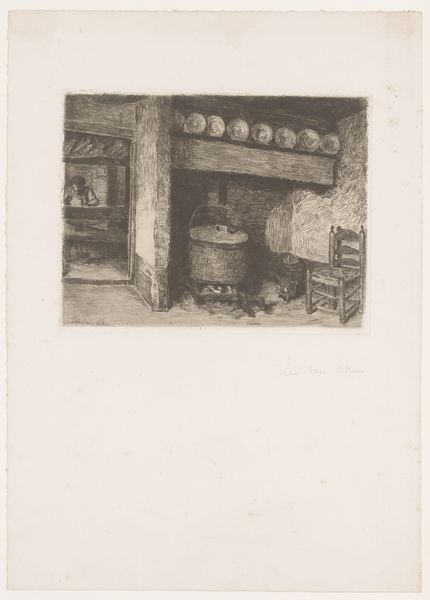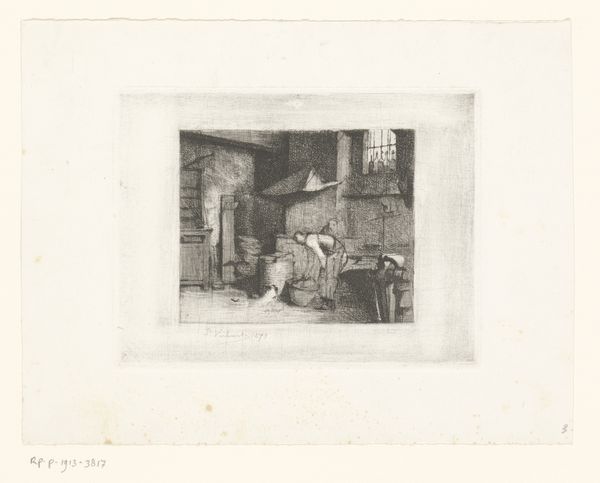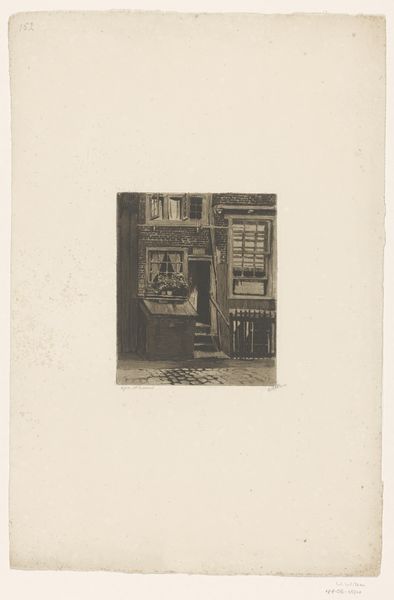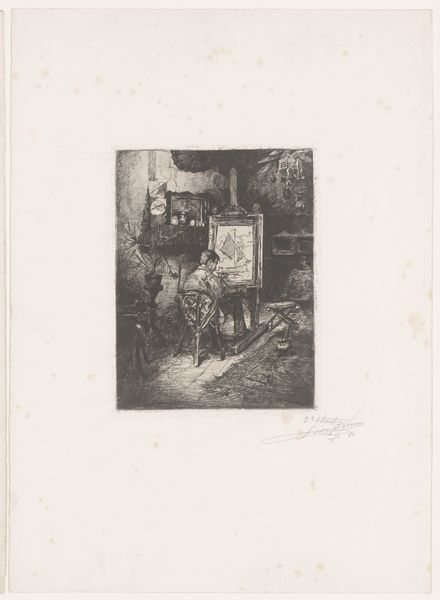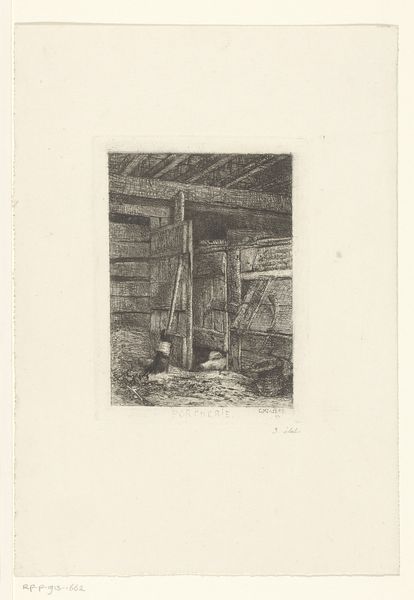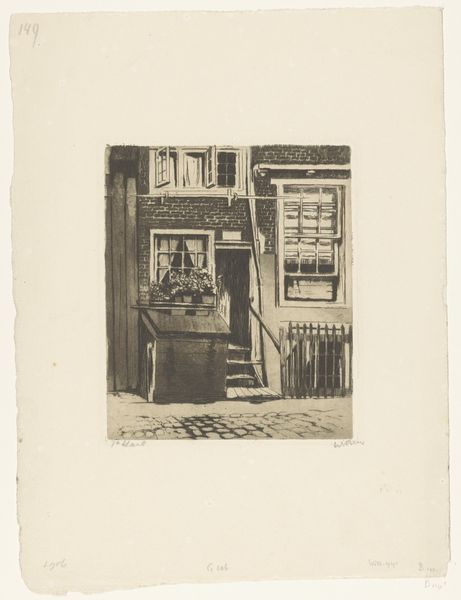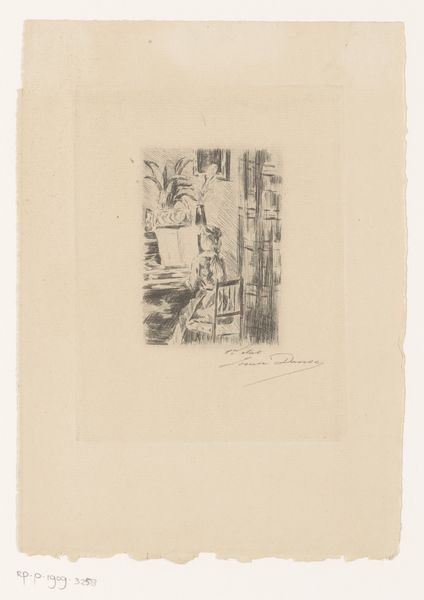
print, engraving
#
mother
# print
#
pen sketch
#
pencil sketch
#
landscape
#
genre-painting
#
engraving
#
realism
Dimensions: height 558 mm, width 393 mm
Copyright: Rijks Museum: Open Domain
Curator: So, here we have Alexandre Calame's "Moeder met twee kinderen bij huizen in bergachtig gebied," dating from around 1852-1855. It's a print, specifically an engraving. Editor: My first impression is quiet desolation, honestly. It’s a sketch-like rendering of a modest home tucked into a rugged mountainside and a woman with children. A sense of rustic isolation just settles on you, doesn't it? Curator: Absolutely. What draws me in is how Calame uses engraving to achieve such detail. Look at the textures – the rough stone, the weathered wood. He really captures the harshness of the environment but with surprising tenderness, especially regarding how that one family is eking out an existence, with what seems like everything built by their own hand. Editor: That’s exactly what’s fascinating – it is so meticulously etched, painstakingly replicated into potentially hundreds of prints to become almost disposable images of the rural working class for bourgeois consumption. Think about the labor required. Curator: I hadn’t considered the dissonance of labor mirroring subject like that, though. It adds another layer. Calame's focus was the grand Romantic landscape, though; these genre scenes gave human scale to nature’s majesty. He’s showing the fortitude, perhaps even the romance, of mountain life. It can't all be romantic. Editor: I agree to a point, but who profits most from this image? This kind of idyllic representation arguably reinforces the societal structures that perpetuate this family’s hardship, allowing a collector to romanticize struggle from a distance, safely in a comfortable home, far from mountain homes and their constant repairs and endless days. Curator: But is that the only takeaway? The material context gives us a vital lens, of course, and allows us to unpack what at first may seem quaint, but I see a deeper humanism here. Perhaps it sparks some understanding, bridging lives and experiences—however imperfectly. It is important to be conscious, critical and also find grace sometimes. Editor: That's fair. Ultimately, a work like this becomes a site of both historical documentation and… artistic interpretation. It shows how landscapes were presented as commodity but lived by many as harsh and requiring work, labor, production, and care. It's an endless play of signifiers, I suppose. Curator: Exactly, an "endless play" where materials and hearts speak volumes, even if in sometimes dissonant harmonies.
Comments
No comments
Be the first to comment and join the conversation on the ultimate creative platform.
